| Articles |
| Link |
Title |
Description |

|
Military Importance of the Battle of Chalgrove
|
The Oxoniensia article written by Derek & Gill Lester showing the Military and Political Importance of the Battle of Chalgrove. |
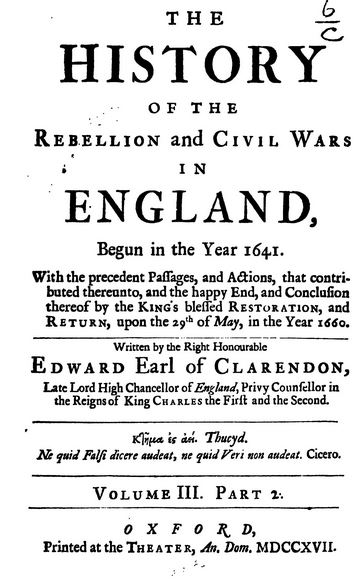
|
The History of The Rebellion and Civil Wars in England by Edward, Earl of Clarendon (aka Edward Hyde)
|
This is a short extract from "The History of The Rebellion and Civil Wars in England" printed at Oxford in 1717 dealing with the Battle of Chalgrove. The 1717 print itself is based on the manuscripts originally written by Edward, Earl of Clarendon (aka Edward Hyde) at the time of the Civil War/Rebellion. However, this publication was produced to counter Whig propaganda and so needs to be read with this in mind. There are additional notes by Derek Lester linking it to other materials, i.e. "The Late Beating Up"; "The Two Letters from the Earl of Essex" and also additional notes showing how it relates to the Oxoniensia article "Military Importance of the Battle of Chalgrove" by Derek & Gill Lester |

|
His Highness Prince Rupert's Late Beating Up the rebel quarters
|
Prince Rupert's account of the beating up of the rebel's quarters at Postcombe, Chinnor and his victory in Chalgrove Field on Sunday 18 June 1643. Also includes an account of Sir John Urrie's expedition to West Wickham on Sunday 25 June 1643. Originally printed in Oxford 1643.
|
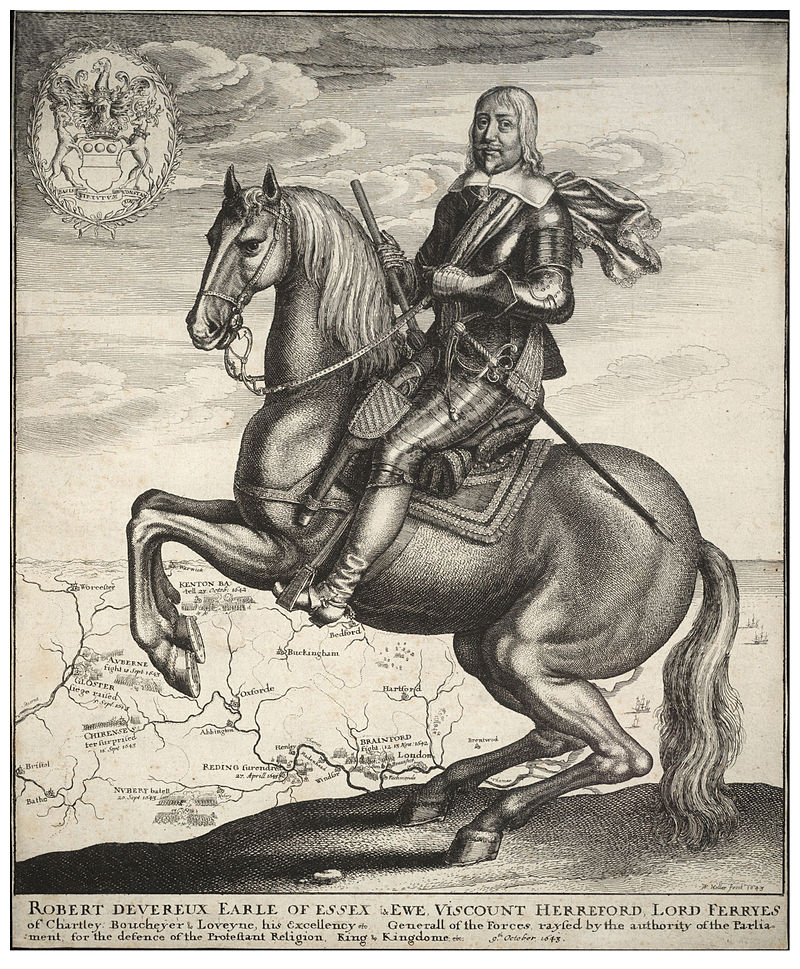
|
Two Letters from his Excellencie Robert Earl of Essex
|
The one to the Speaker of the House of Commons; relating the true state of the late skirmish at Chinnor, between a party of the Kings and Parliaments forces, on the Sabbath day the 19 June, 1643, with the number of such persons as was taken and slain on both sides. The other to the well affected of the county of Essex. Printed & published by order of Parliament, 23 June 1643.
|

|
A True Relation of a Great Fight - Printed between 19 and 24 June 1643
|
A True Relation of a Gret Fight - Between the Kings Forces and the Parliaments, at Chinner near Tame on Saturday last. With the manner how the Kings Forces made the assault, and by what meanes they were forced to retreat. Also in what manner Colonell Hampden is wounded, with the names of the chiefe Commanders that were killed and taken prisoner on both sides: As also the firing and burning of the Towne of Chinner, by the Kings Forces and many other remarkable passages concerning the said fight - Printed in London by B A for Robert Wood and John Grenesmith.
|
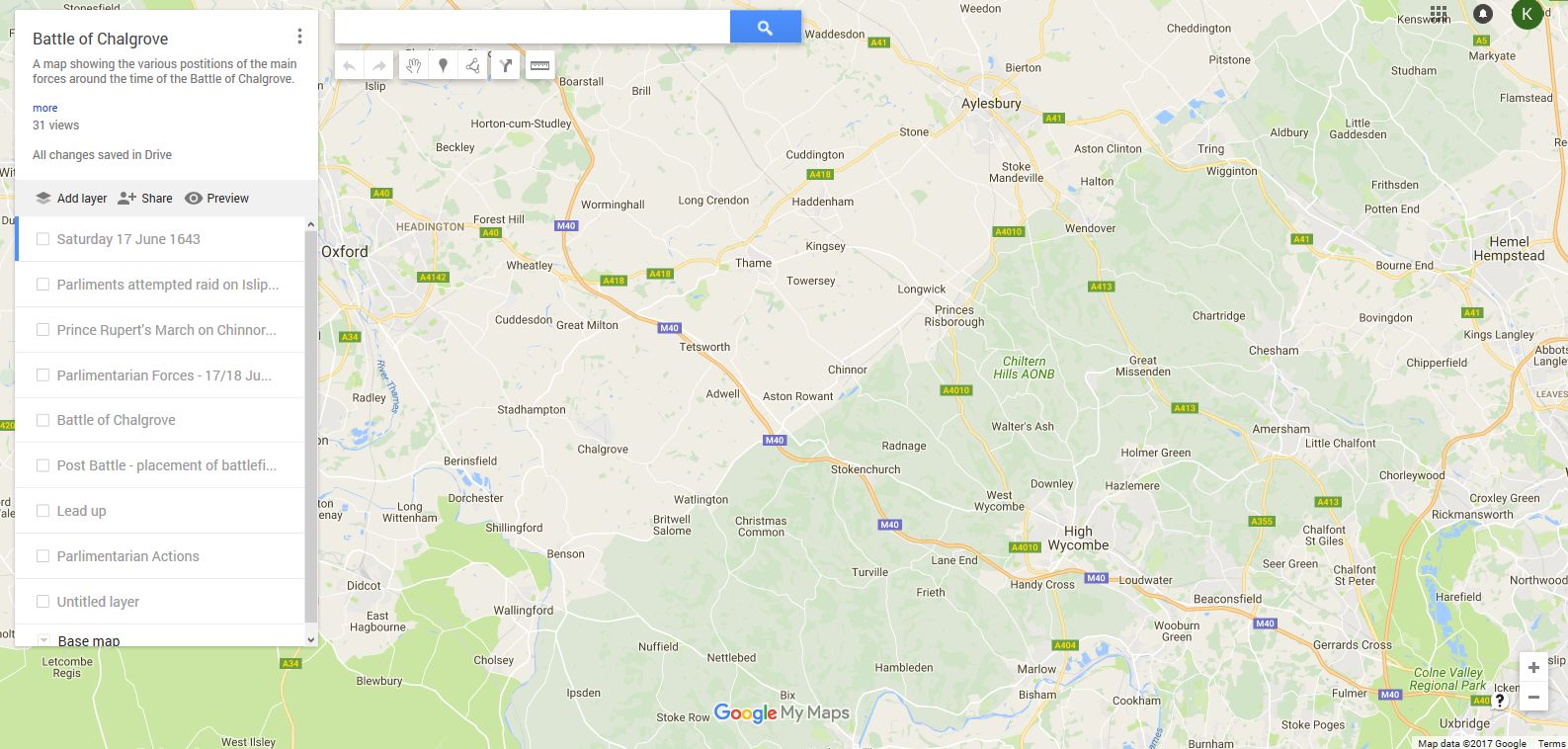
|
Times and Places in the ‘LATE BEATING UP' compared with the 'ESSEX LETTERS' in chronological order
|
A detailed comparison of the accounts of the battle of Chalgrove as reported in the "Late Beating Up" and "The Letters of Lord Essex".
|
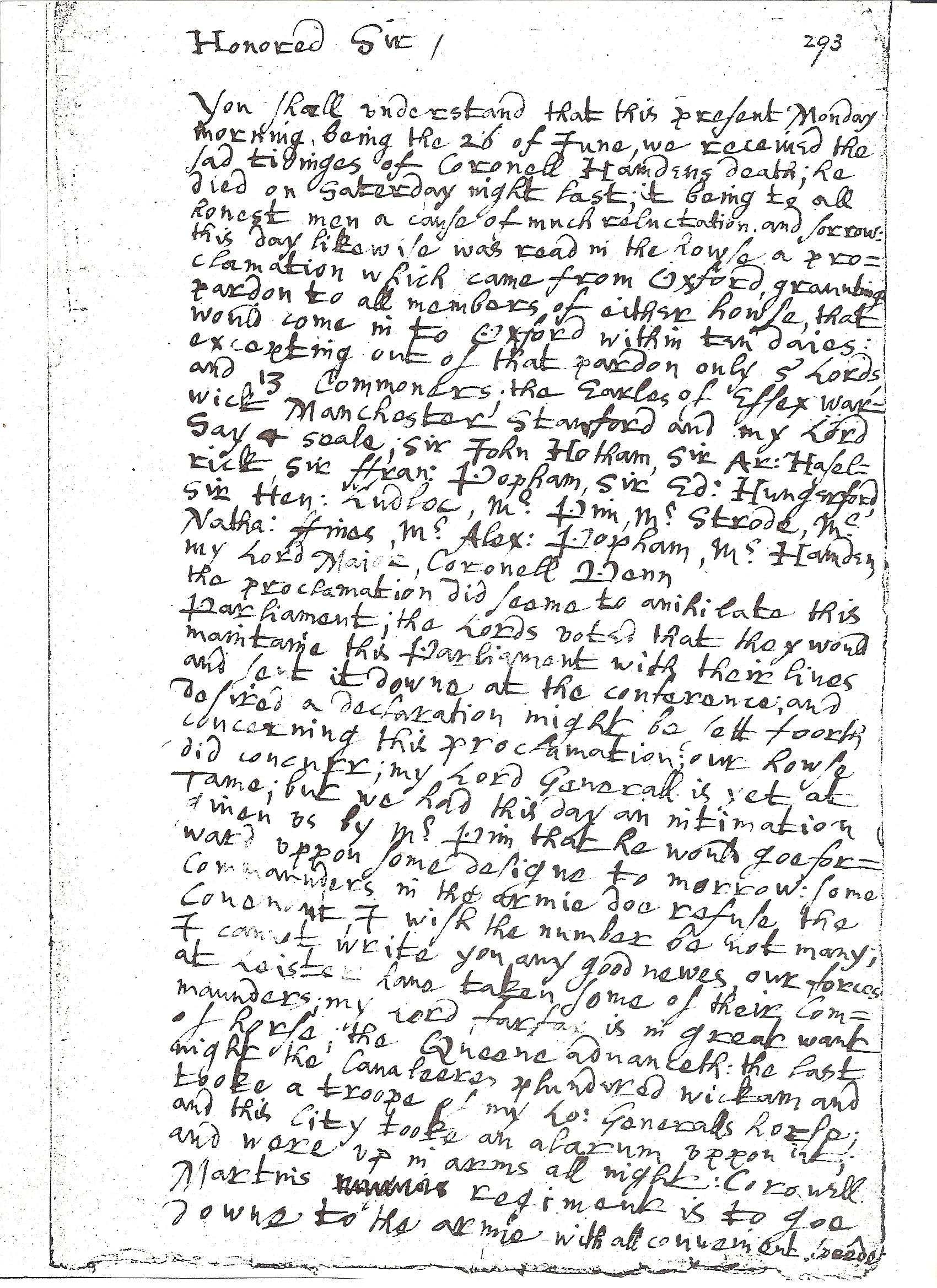
|
Letter from Rob Goodwin to Col Sir Thomas Barrington dated 26 June 1643
|
Transcript of a letter from Rob Goodwin to Col Sir Thomas Barrington dated 26 June 1643. Containing the news of John Hampden's death, details of a proclamation in parliament for a pardon for members that come to Oxford and movement of various forces including the facts that the Lord General is about to leave Thame and the Queen has advanced.
|
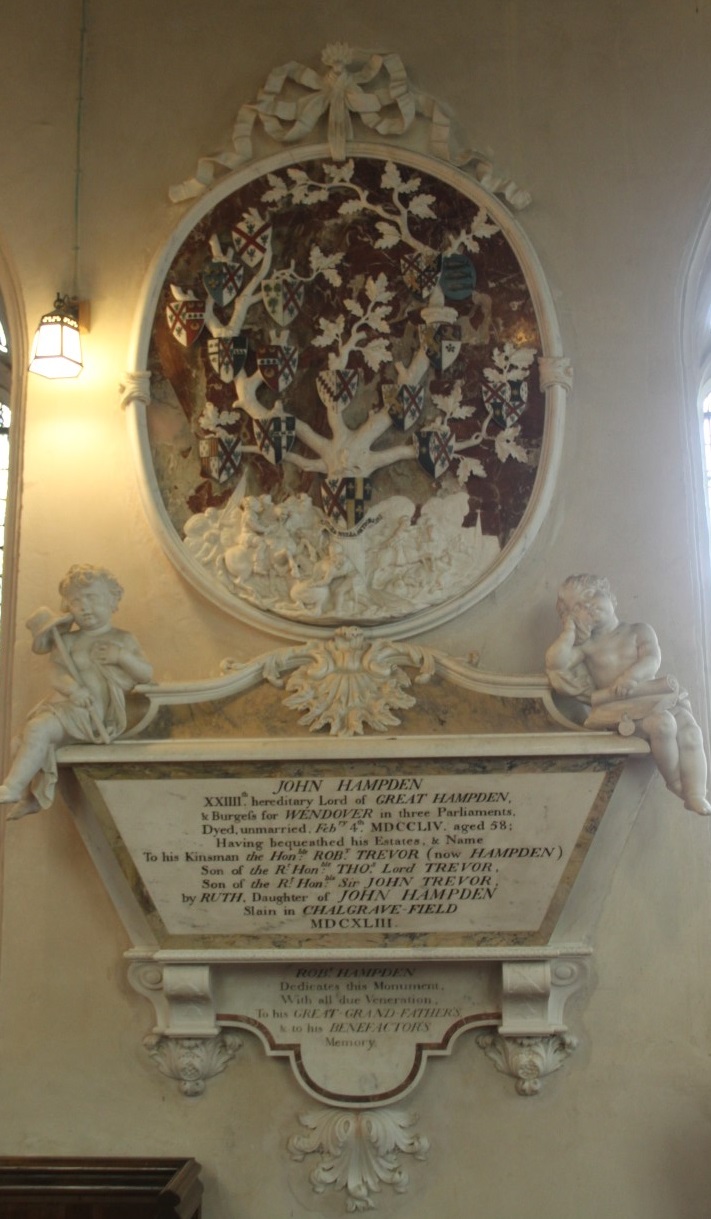
|
Controversy of Hampden's Death
|
A look into the events surrounding Lord Nugent's attempt to determine how Col John Hampden died.Written by: Derek & Gill Lester. |
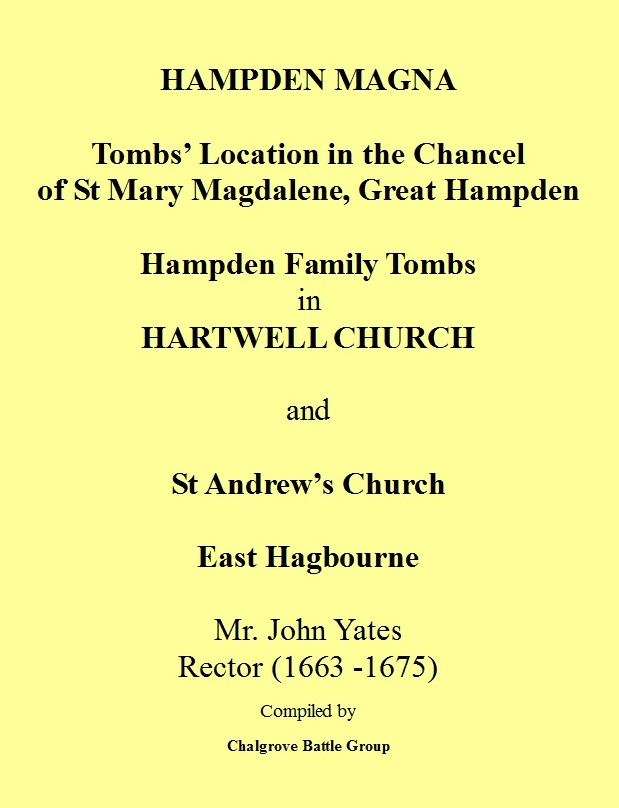
|
Hampden Magna
|
John Hampden The Patriot his grave is located at the entrance to the Chancel. A list of all the monuments present in the chancel of St Mary Magdalene church Great Hampden compiled by the rector John Yates at the time of his incumbency 1663 - 1675. The Introduction gives an account of the secrecy surrounding Col John Hampden's funeral. Facing copies of the original documents is a transcription to help the reader. Written by: Derek & Gill Lester - Chalgrove Battle Group. |

|
Monument Unveiled
|
Compilation of contemporary newspaper articles detailing the unveiling of the John Hampden Monument - by: Derek & Gill Lester
|
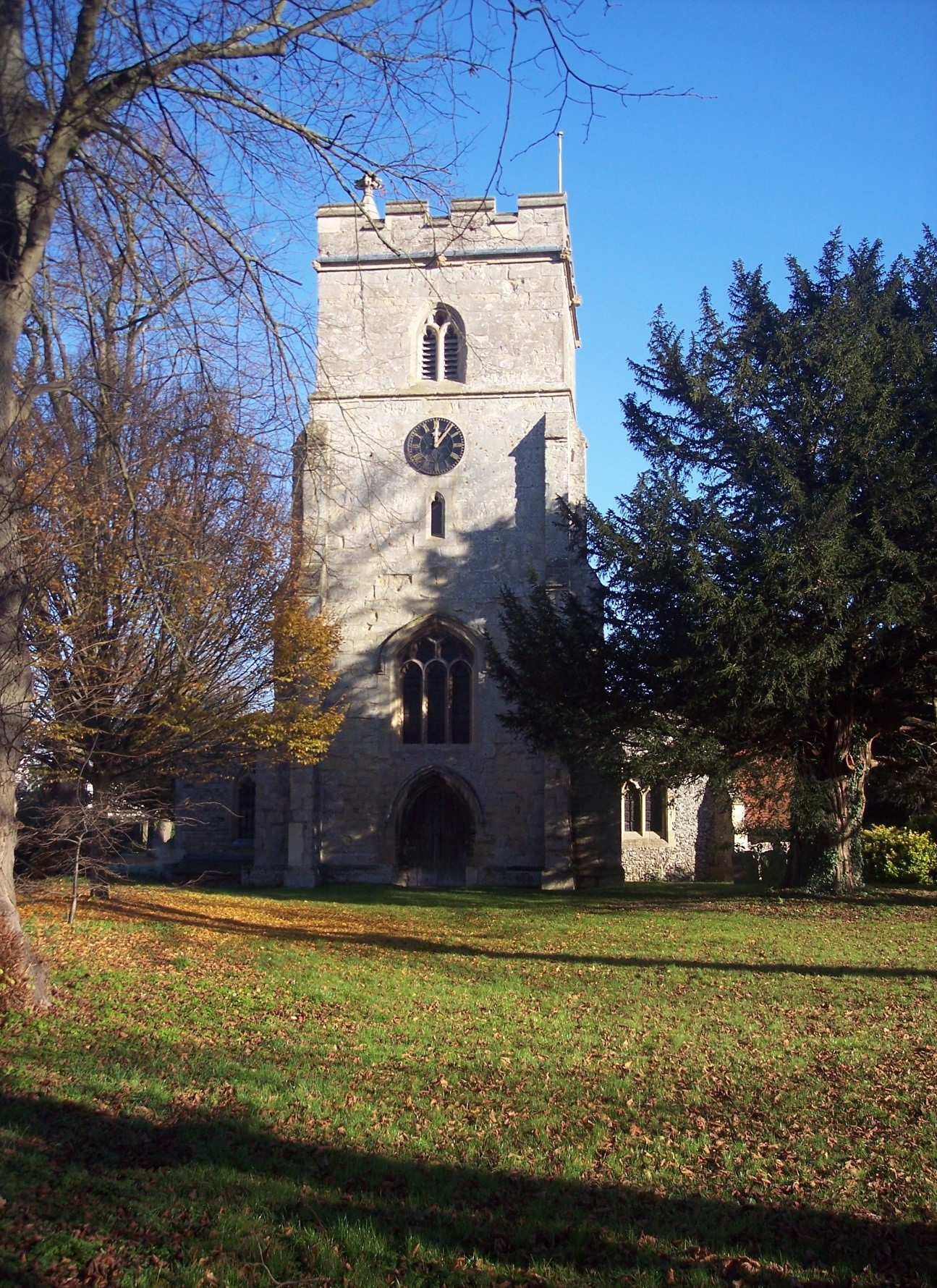
|
The Legend of Parslows Military Chest Explained
|
An analysis of the legend of how Robert Parslow, Landlord of the Hare & Hounds, Watlington, came into possession of a Parliamentarian Military Pay Chest, that contained the monies to pay Col. John Hampden's Regiment of Foote.
|
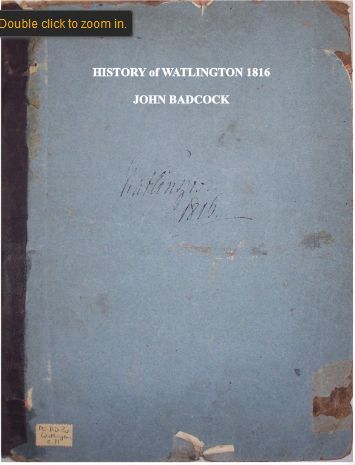
|
History of Watlington 1816
|
History Of Watlington 1816 - Written by: John Badcock, Transcription by: Derek Lester. The book is laid out with an image of the original text on the left hand side and the transcription, with notes, on the right hand leaf.
|
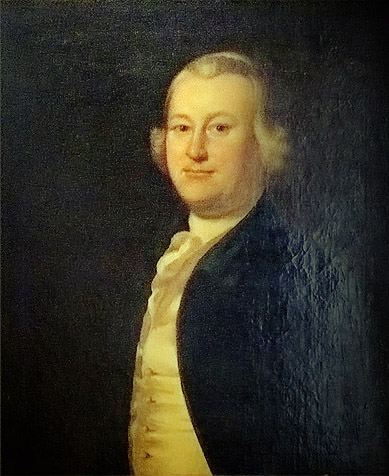
|
Extract from American Heritage Magazine, Feb. 1962
|
Extract from American Heritage Magazine, Feb. 1962, by Richard B. Morris, professor of history at Columbia University in New York, article entitled “Then and there the child Independence was born” In which the author mentions that James Otis used the name of John Hampden as a pseudonym to press a sweeping denial of Parliament’s right to tax the colonies.
|


















